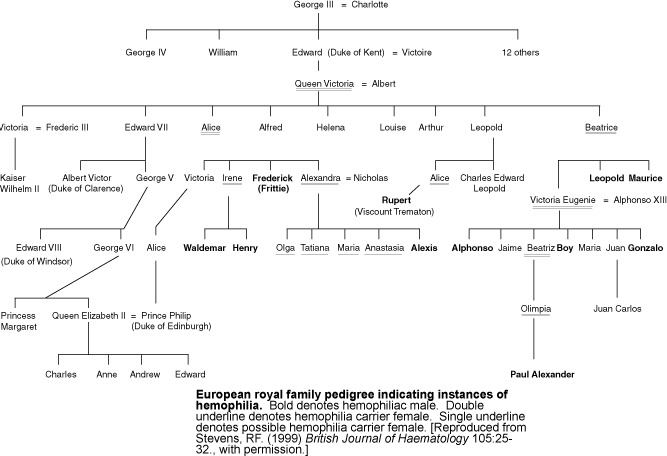

| ||||

The extrinsic pathway is generally the first pathway activated in the coagulation process and is stimulated in response to a protein called tissue factor, which is expressed by cells that are normally found external to blood vessels. However, when a blood vessel breaks and these cells come into contact with blood, tissue factor activates factor VII, forming factor VIIa, which triggers a cascade of reactions that result in the rapid production of factor X. In contrast, the intrinsic pathway is activated by injury that occurs within a blood vessel. This pathway begins with the activation of factor XII (Hageman factor), which occurs when blood circulates over injured internal surfaces of vessels. Components of the intrinsic pathway also may be activated by the extrinsic pathway; for example, in addition to activating factor X, factor VIIa activates factor IX, a necessary component of the intrinsic pathway. Such cross-activation serves to amplify the coagulation process. The production of factor X results in the cleavage of prothrombin (factor II) to thrombin (factor IIa). Thrombin, in turn, catalyzes the conversion of fibrinogen (factor I)—a soluble plasma protein—into long, sticky threads of insoluble fibrin (factor Ia). The fibrin threads form a mesh that traps platelets, blood cells, and plasma. Within minutes, the fibrin meshwork begins to contract, squeezing out its fluid contents. This process, called clot retraction, is the final step in coagulation. It yields a resilient, insoluble clot that can withstand the friction of blood flow. | ||||
To cite this page:
| ||||
| |||
| also spelled haemophilia hereditary bleeding disorder caused by a deficiency of a substance necessary for blood clotting (coagulation). In hemophilia A, the missing substance is factor VIII. The increased tendency to bleeding usually becomes noticeable early in life and may lead to severe anemia or even death. Large bruises of the skin and soft tissue are often seen, usually following injury so trivial as to be unnoticed. There may also be bleeding in the mouth, nose, and gastrointestinal tract. After childhood, hemorrhages in the joints—notably the knees, ankles, and elbows—are frequent, resulting in swelling and impaired function.
Persons with hemophilia are ordinarily advised to avoid activities that might expose them to bodily injury. The management of bleeding episodes includes infusions of clotting factor, which is derived from human blood or by recombinant DNA technology. The drug desmopressin (DDAVP) is useful in treating milder forms of hemophilia A. Hemophilia may also be attributed to a deficiency of factor IX (hemophilia B) or of factor XI (hemophilia C); hemophilia B (also called Christmas disease), like hemophilia A, is sex-linked and occurs almost only in males, whereas hemophilia C may be transmitted by both males and females and is found in both sexes. | |||
To cite this page:
| |||
| | |||||||||||||||||
| |||||||||||||||||
| |